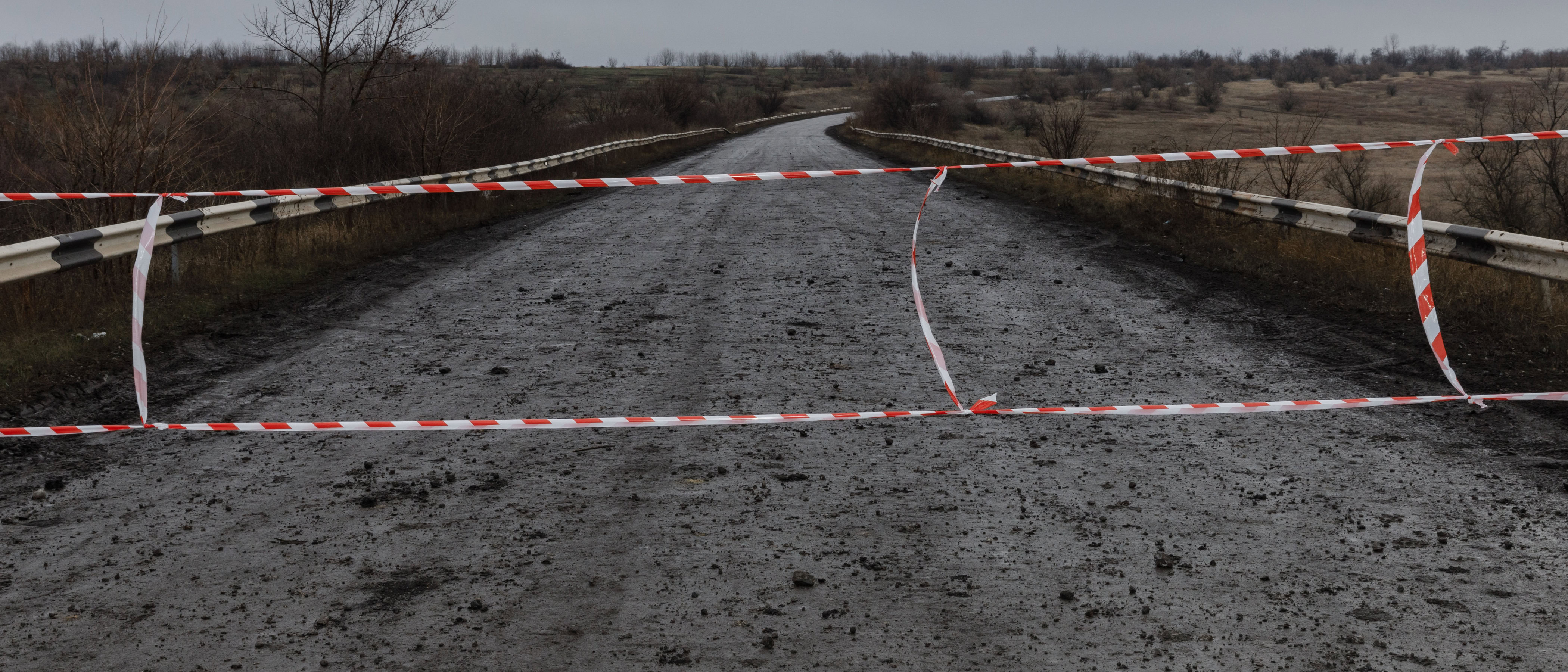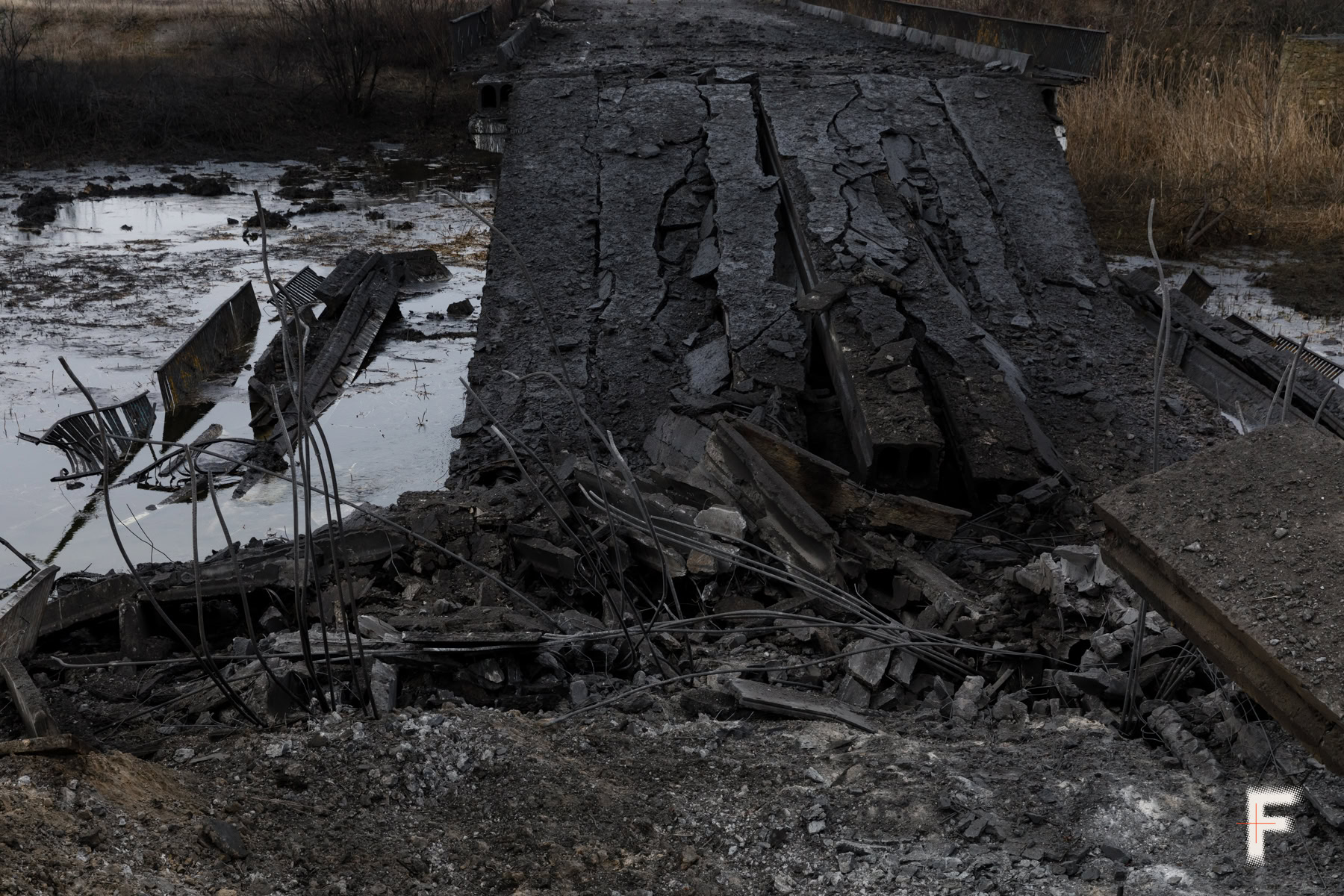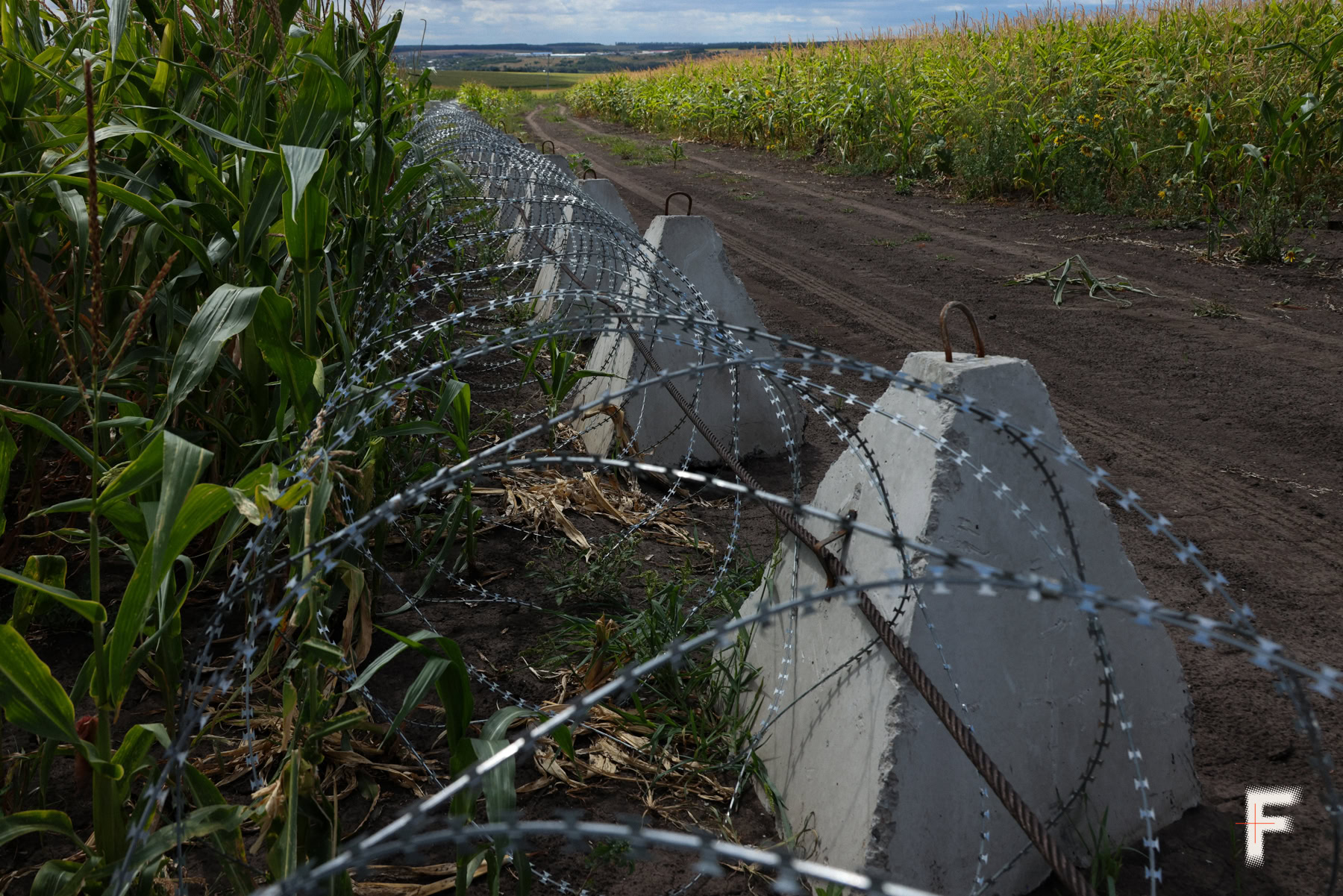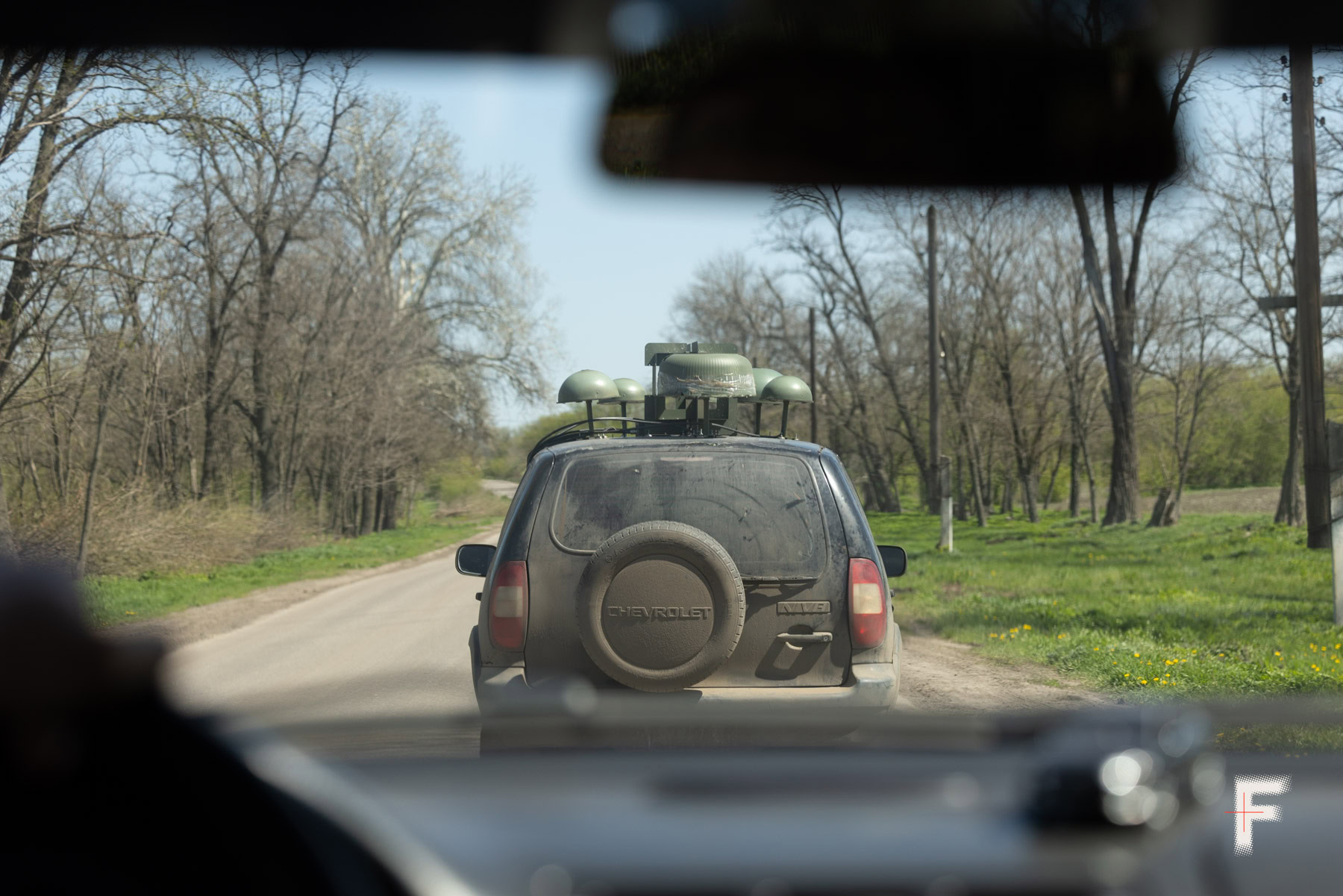

The situation in the Oleksandrivka direction is becoming more difficult – the Ukrainian Armed Forces are implementing a new defensive tactic.
The situation in the Oleksandrivka direction has been steadily worsening in recent weeks. Russian forces are pressing forward with infantry assaults, attempting to break through Ukrainian positions using motorcycles and light armored vehicles, while covering their advance with attack drones from above. Enemy flags have reportedly begun appearing on buildings that were under Ukrainian control until recently. At the same time, new defensive lines in the sector are only now being built. Ukrainian servicemen shared more details about the situation on the ground with Frontliner journalists.
In recent days, in the Oleksandrivka direction on the border between Donetsk and Dnipropetrovsk regions, Russian forces attempted to stage a fake capture of a village where fighting was still ongoing. Two occupiers carrying out this operation were eliminated as soon as they were spotted. Ukrainian infantry quickly secured the building, leaving the Russian tricolor in place. The next group of Russian forces advancing to assault the positions was convinced that the building had already been captured. But they too were killed by infantry from the 110th Brigade. “It was a planned operation to outplay the enemy,” explained Ivan Sekach, head of public affairs for the 110th Mechanized Brigade. The presence of a Russian flag does not automatically indicate Russian control.
“Russian forces aren’t firing because they believe their troops are already in that building. When you look at the Deep State map, the red zone doesn’t indicate captured territory – it marks areas where fighting is actively taking place. Even ten kilometers beyond that, combat continues. You can’t say those areas are occupied. The most accurate way to assess the situation is to take the statements from Russia and our General Staff and split them in half,” explains the head of public affairs for the 110th Mechanized Brigade.
The Russians sent two women to assault positions. They were practically walking to their deaths because they had no idea where to go or what to do.


To break through the defensive line, Russian forces are using all available resources. Among them are mobilized women, who were spotted a few days ago on a section of the front held by the 154th Mechanized Brigade.
“Earlier this week, the Russians sent two women to assault positions. They were practically walking to their deaths because they had no idea where to go or what to do. They spent a long time crossing the field, and no one engaged them for about 40 minutes. It became clear they were completely unprepared when they reached an old marker and tried to figure out where to go next. It was sheer foolishness,” says Artem, call sign “Kruzak,” acting head of the communications department.
Russian forces captured the fortifications even before reinforcements arrived
Along the border of Donetsk and Dnipropetrovsk regions, the open steppe and mostly dirt roads leave little shelter from attacks. The lack of natural defences makes defending the Oleksandrivka (formerly Novopavlivka) direction especially challenging. The Vovcha River is the sole existing obstacle, complicating attacks by the occupiers as well as counteroffensives by Ukrainian forces. The crossings built here last only two to three days, and they are hit every few hours. Crossing a pontoon bridge has become a race against time – will the equipment get across first, or will a drone strike it and injure the troops?


We had to dig in out in the open fields, in destroyed villages, and in demolished houses,
The 154th Mechanized Brigade had previously been stationed near Kupiansk and Vovchansk. They were redeployed to reinforce the Oleksandrivka sector alongside the 110th Brigade, but they did not expect what awaited them.
“All the fortifications and defensive positions that had been prepared here were captured by the Russians even before we arrived. We had to dig in out in the open fields, in destroyed villages, and in demolished houses,” says serviceman Artem.
Recently, we have started using ground-based robotic systems that both mine positions and evacuate people,
Due to the lack of cover and secured positions, holding this front is extremely difficult. The Russians have created a four-kilometer-long kill zone up to the gray zone, forcing infantry to advance on foot. The number of Russian drones prevents even the evacuation of the wounded or the dead. In addition, the Russians carry out targeted strikes not only on military transport but also on civilian vehicles. At the end of October, the occupiers fired on a medical vehicle marked with red crosses, which was carrying a team of medics.
[Translator’s note: A gray zone is a contested area between opposing forces where neither side has full control.]
“If someone is wounded, that distance has to be covered either by people willing to carry the injured themselves or by the wounded themselves. Recently, we have started using ground-based robotic systems that both mine positions and evacuate people. Only these systems can safely retrieve someone and bring them to the required location, provided they aren’t targeted by drones or destroyed by a strike along the way,” says ‘Kruzak,’ acting head of the communications department of the 154th Mechanized Brigade.


As a result, there is no clear process for evacuating the killed and wounded. At times, the wait for evacuation is so long that even lightly injured soldiers face life-threatening risks from infection and complications. Consequently, medics stay on the frontlines alongside infantry to provide immediate first aid directly on the battlefield.
Onslaught of Russian drones and new fortifications
But the border between the Donetsk and Dnipropetrovsk regions is not prepared for defense,
The situation is further complicated by the fact that anti-drone nets have still not been installed along the roads, which could at least offer short-term protection against UAVs or reduce the impact of strikes. As a result, all the soldiers’ hope rests on the speed of their own reactions, explains Artem.
“The only thing being done here is building a defensive line on the border of Zaporizhzhia and Dnipropetrovsk regions. But the border between the Donetsk and Dnipropetrovsk regions is not prepared for defense. The Zaporizhzhia Administration provided us with a few dozen drones for protection, while the Administration of Dnipropetrovsk has refrained from assisting,” notes the serviceman.
This is confirmed by Ivan Sekach. He affirms that his brigade has received no assistance from the Dnipropetrovsk Regional Military Administration, and there are no signs that anti-drone nets will be installed. Instead, the troops are using another method to hinder the Russians should they attempt an advance.
“They are building defensive obstacles in the form of ditches, Czech hedgehogs, pyramids (dragon’s teeth), wires that tangle in wheels, and then more ditches. The obstacles are constructed in two to three successive rows, extending up to 50 meters. Nearby, bunkers are also being built for UAV operators. At least, this is the tactic used near Novomykolaivka and Pokrovsk. This is our way of responding to their push with a massive infantry assault,” explains the head of public affairs for the 110th Brigade.


The tactic of building defensive lines stretching tens of kilometers had already played out by 2023 in Avdiivka, according to Ivan Sekach. At that time, engineering troops constructed zigzag trenches and bunkers with machine-gun nests following Soviet-era manuals. However, these lines proved ineffective because there were not enough personnel to operate them properly. Over a three-kilometer stretch, lines that should have been held by 1,000 soldiers were instead manned by roughly a hundred.
“It’s hard to cross a field while our drones or cluster munitions are striking it. But sprinting 100 meters to the defensive line, leaping in and taking cover in a dugout – that’s doable. Pushing the enemy out from there, however, isn’t easy. That’s why fighting has gotten harder for us,” Ivan Sekach says.
The bunkers currently being built are designed to protect UAV crews – buried several meters underground, with multiple layers of logs and armored coverings on top.
Soldiers are buying EW systems for 700,000 hryvnias out of pocket
At present, EW systems are the only means of protecting military vehicles on the roads near Pokrovsk and Novomykolaivka, but very few are available. Soldiers are purchasing these devices with their own money. A single EW unit capable of jamming several types of drones costs more than 700,000 hryvnias (about 17000 USD). It operates across six frequency bands used by most UAVs but offers no protection against fiber‑optic (wired) systems.
[Translator’s note: ‘EW’ refers to electronic warfare gear used to jam or intercept enemy communications and drones.]
“Right now, EW systems are more like a holy icon hanging in the vehicle, because without nets, trees, or other cover, there’s no way to escape a drone — even if you see it targeting your vehicle. For example, there’s a stretch of road where over 15 burned-out vehicles are scattered within 200 meters: civilians’ cars, trucks, and military equipment alike,” says serviceman ‘Kruzak.’


Almost all types of drones used by the occupiers have been observed in the Oleksandrivka direction. The most common are fiber-optic FPV drones, but UAVs carrying loitering munitions – ‘Molniya,’ ‘Lancet,’ ‘Gerber,’ and ‘Italma’” – are also constantly in the sky. Russian drones are more resistant to EW systems than Ukrainian ones, notes the acting head of communications for the 154th Brigade. Furthermore, most UAVs are equipped with artificial intelligence and pre-programmed to strike specific targets, leaving very little margin for error when attacking buildings or equipment.
You can play badminton with drones here – one of ours flies out and two enemy drones come to meet it,
Every day, the Russians drop some 50-60 aerial bombs on the 154th Brigade positions. In the past two weeks, Russian command moved four motor-rifle brigades into the sector to reinforce their attacks, while artillery strikes hit every hour.
The Oleksandrivka direction is one of the Russians’ highest priorities. If they break through the defenses, new avenues for assaults and the capture of parts of Donetsk and the Pokrovsk region will open up. The settlements of Pokrovske, Novopavlivka and Oleksandrivka are important logistics hubs – controlling them would allow the Russians to replenish units with ammunition, weapons and personnel. For this reason, the pressure on the Defense Forces here is nearly as intense as fighting on the Pokrovsk front. Enemy attacks must be repelled every hour or more to hold the line under Ukrainian control.
Text: Alina Evych
Adapted: Irena Zaburanna
Read more — Kharkiv — a city in the east, a city on the edge
